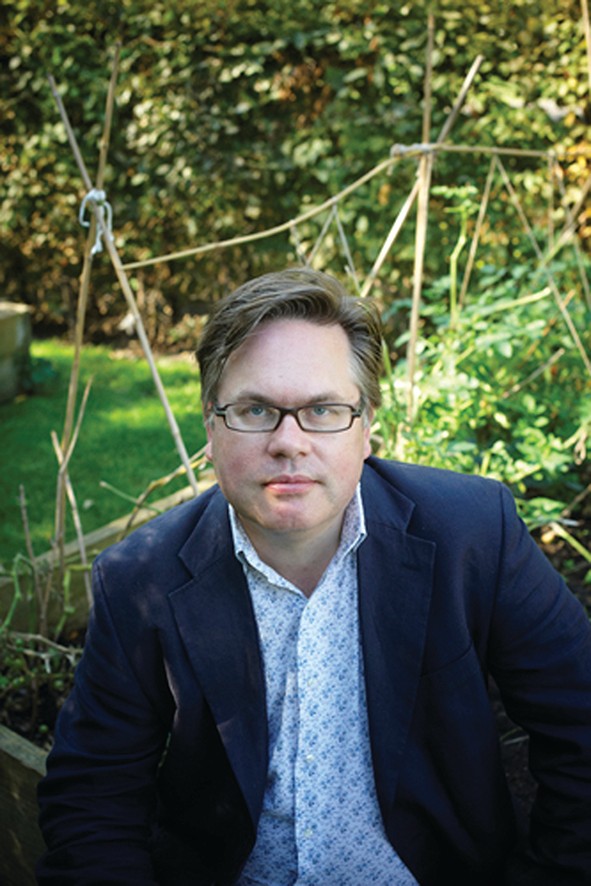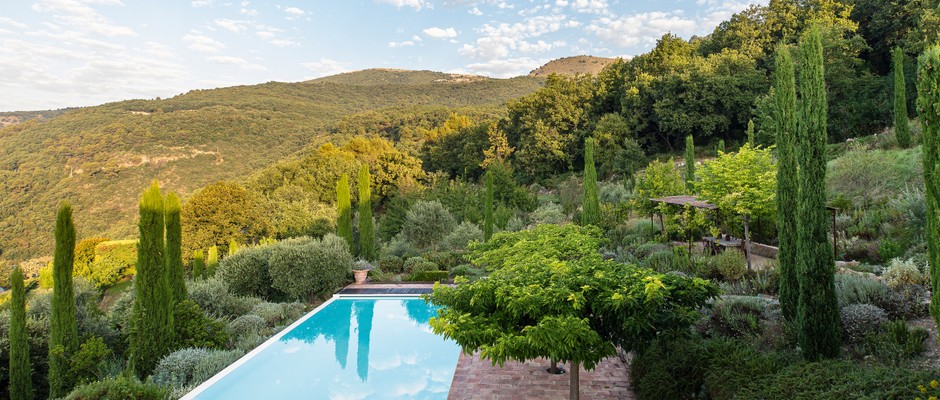
A Provençal garden with a naturalistic twist from James and Helen Basson
Outward looking James and Helen Basson have given a classic Provençal garden a naturalistic twist to blend with the stunning surrounding landscape. Words Tim Richardson, photographs Claire Takacs
When James and Helen Basson re-located to the South of France in 2000, their aim was to set up a design practice inspired by the contemporary ‘naturalistic turn’ in planting design. The idea of a garden made up chiefly of late-summer-flowering perennials and grasses has been sweeping Europe and latterly America over the past few decades, and James and Helen have spent their time in the Alpes-Maritimes honing a plant palette that can survive and thrive in what can be an extremely harsh environment. In this project they have found an able collaborator in Olivier Filippi, a Languedoc-based nurseryman who has emerged as an authority on dry-climate plants of interest and distinction, and who has also advised Tom Stuart-Smith, James Hitchmough and other British designers on Mediterranean projects.
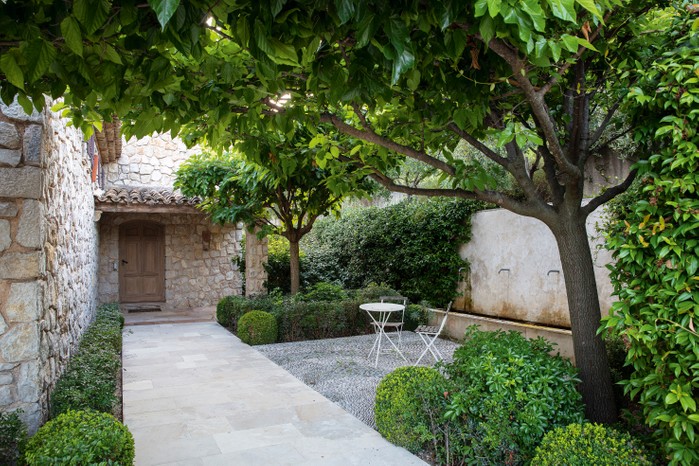
A garden in Tourrettes-sur-Loup, set in an enviable elevated position midway between the towns of Grasse and Vence with 270-degree views taking in both sea and mountains, is an intriguing and in some ways untypical example of the Bassons’ work. It demonstrates how a modern planting attitude can be absorbed into the traditional Provençal garden vocabulary of cypress trees, olive groves and clipped shrubs in familiar species such as rosemary, lavender, cistus and teucrium. The clients were open to James’s missionary zeal for a looser, wilder tone, and over the years it’s turned into a real collaboration. “We’ve tweaked and edited and added, remoulding it a little more every year. That’s the joy of it.”
The result is a garden that retains certain classic Provençal elements – cypresses, lavender and a certain formality around the house – leavened by choice plants from James’s growing roster of reliable additions, creating in the process a slightly ‘shaggier’ look that blends more easily with the rugged landscape. “We’ve been resculpting those clipped topiary balls into more pebble-like shapes that seem right with the landscape,” he says. “It’s as if you are almost pushing the garden back into the surrounding landscape by creating these more natural forms. Some things are pruned and some things are left, so you get that contrast.”
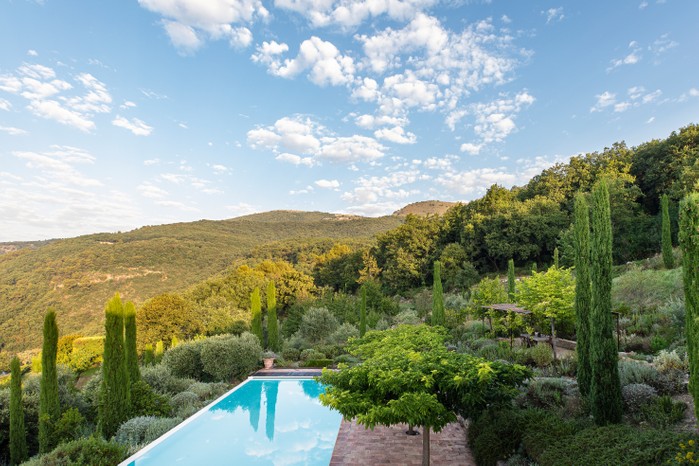
The pool terrace affords stunning views including part of the plateau of the Col de Vence. While notes of formality, such as the cypress trees and mulberries, remain, designer James Basson has added a range of dry-climate shrubs and flowers, allowing it to segue with the surrounding landscape where teucrium and olive trees eventually give way to downy oak forest.

The planting seems to overflow the retaining wall by the pool and dining terrace — which was part of the designer’s intention. The traditional vocabulary of lavender, euphorbias, teucrium and rosemary is enlivened by the likes of Phlomis purpurea, on the right, and Teucrium fruticans, Lavandula dentata and Tulbaghia violacea at the foot of the wall.
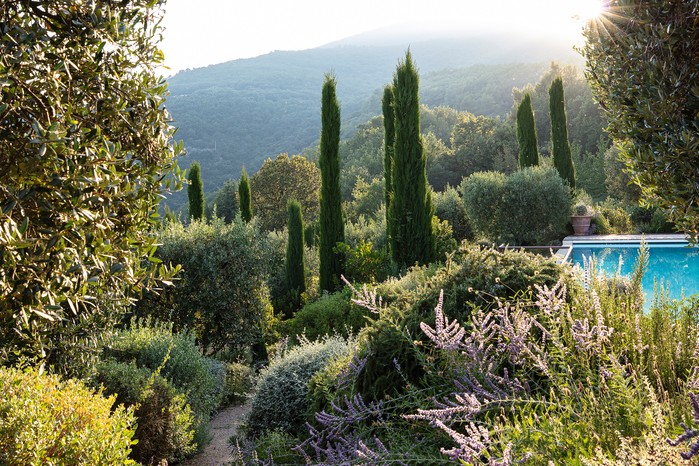
A path that encircles the property descends past the pool terrace towards the surrounding plantings of olives and oaks, with cypress trees acting as way markers. The surface of the path has been left deliberately rough-looking, while Salvia atriplicifolia (formerly Perovskia atriplicifolia), which is native to the Middle East and Asia, explodes over the path from the right.
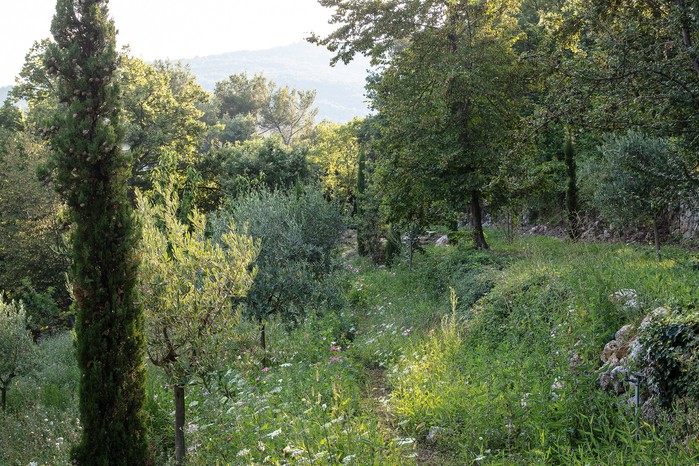
The pathway eventually roughens down to the merest indication of a formal way, flanked by seeded flowering prairies, which includes pink mallow in the foreground along with the white sprays of wild carrot and subtle pale-blue bituminaria.

At the back of the house is a path that leads through a mix of structural shrubs includes cistus, rosemary, atriplex, lavender and rosemary, with arbutus and olive trees above, and a clipped olive hedge in the background. To the left of the path, flower interest comes from the white umbels of wild carrot, Daucus carota, and the purple society garlic, Tulbaghia violacea.

Close to the entrance to the house, a relaxed seating area beside a water trough is shaded by two white mulberry trees that link the planting to the pool terrace at the rear.
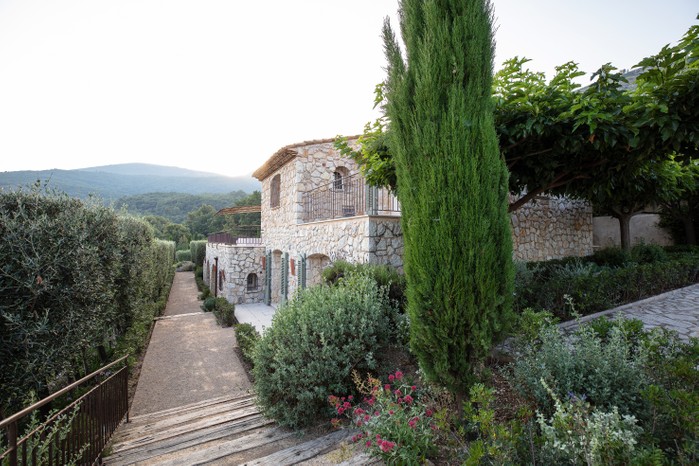
A straight, stepped path (with Centranthus ruber sprouting at lower right) provides access at the front of the house, which faces the sea. However, a tall clipped-olive hedge has been planted to create a hard boundary, obscuring neighbouring houses on the slopes below. It makes for unimpeded vistas in almost every direction and a feeling of glorious solitude.
Find out more about the Bassons’ work at scapedesign.com/en
Authors
Garden critic and landscape historian, Tim Richardson is also founder-director of the Chelsea Fringe Festival.

Niwaki bundle worth £57 when you subscribe
Subscribe to Gardens Illustrated magazine and claim your Niwaki bundle worth £57
*UK only

Container Gardening Special Edition
The Gardens Illustrated Guide to Container Gardening.
In this special edition, discover colourful flower combinations and seasonal planting schemes for pots designed by leading plantspeople, and essential know-how for container gardening success. Just £9.99 inc UK p&pBy entering your details, you are agreeing to our terms and conditions and privacy policy. You can unsubscribe at any time.
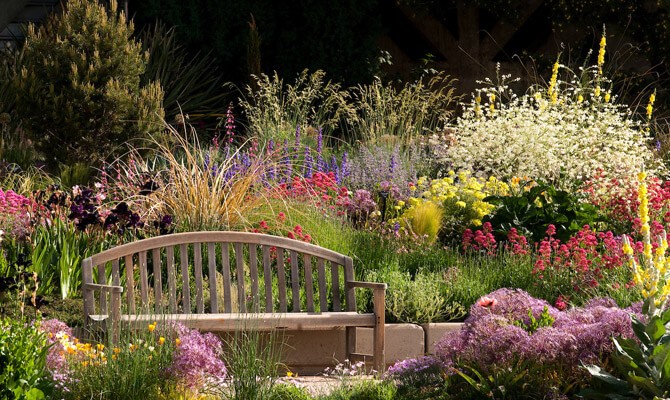
Gardens of the Globe
From botanical wonders in Australia to tranquil havens closer to home in Ireland, let this guide help you to discover some of the most glorious gardens around the world
By entering your details, you are agreeing to our terms and conditions and privacy policy. You can unsubscribe at any time.


